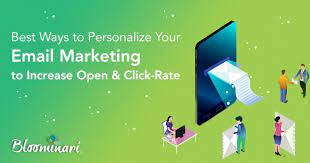Unleashing the Power of Personalization in Event Email Marketing
Email marketing is an essential aspect of event planning and promotion. It is an effective way to reach out to potential attendees, promote events, and keep them updated with event news. But sending out generic emails may not be enough to capture the attention of your target audience. In today’s digital age, personalization is the key to make your event email marketing successful.
Personalization involves customizing emails to match the individual needs and preferences of your target audience. It involves creating personalized content, subject lines, and call-to-actions to cater to the recipient’s interest. Studies show that personalized emails have a higher open rate, click-through rate, and conversion rate than generic emails. The following are tips and best practices for unleashing the power of personalization in event email marketing.
Segment Your Email List
Segmenting your email list involves dividing it into smaller subgroups based on certain criteria like age, interests, and job position. It allows you to send targeted emails to a specific group, which increases the chances of your email being opened and read. For instance, you can send a personalized email to a group of young professionals, inviting them to attend a networking event.
Create Dynamic Content
Dynamic content involves designing and displaying personalized content to match the user’s preferences and past behaviors. It involves using data like past attendance, event preferences, and engagement to create targeted content. For instance, you can design an email with a personalized greeting, including the recipient’s name alongside a special offer customized specifically for them.
Incorporate Data Analytics
Data analytics is an essential aspect of event email marketing. It allows you to track the performance of your email campaigns, monitor open rates, click-through rates, and conversion rates. You can use analytics to test different subject lines, email designs, and call-to-actions to optimize your email campaigns’ performance.
Use Personalized Subject Lines and Pre-headers
Subject lines and pre-headers are the first things that recipients see when they receive your email. Personalizing them can increase the chances of your email being opened. For instance, you can include the recipient’s name, location, or industry in the subject line to make it more relevant to them.
Include Personalized Call-to-Actions
Call-to-actions are essential in driving conversions. Personalizing them can make the recipient feel like the email was personally created for them. For instance, you can add a call-to-action that directs the recipient to a page with customized content specifically for them.
Use Personalized Sender Names
Personalizing the sender name makes the email feel more personal and increases the chances of it being read. For instance, using the name of the event organizer, rather than the company name.
Conclusion
Personalization is a powerful tool in event email marketing. Personalizing your emails to match the recipient’s preferences, interests, and past behaviors can increase open rates, click-through rates, and drive conversions and event attendance. By following the tips and best practices provided above, you can create effective email campaigns that resonate with your target audience.
FAQs
Segmenting your email list depends on criteria like age, industry, location, and past behavior. Make sure to use data that is relevant to your event and target audience.
Dynamic content relies on data like past behavior, event preferences, and engagement. It is essential to have this information to create targeted content.
You can use data analytics to track the performance of your email campaigns. Metrics like open rates, click-through rates, and conversion rates can help you evaluate the success of your email campaigns.
The frequency of personalized emails depends on the preferences of your target audience. Make sure not to overdo it and send too many emails as it may turn off potential attendees.
Using a professional email address like [email protected] creates a more professional image and increases the chances of your email being perceived as authentic and not spam.


